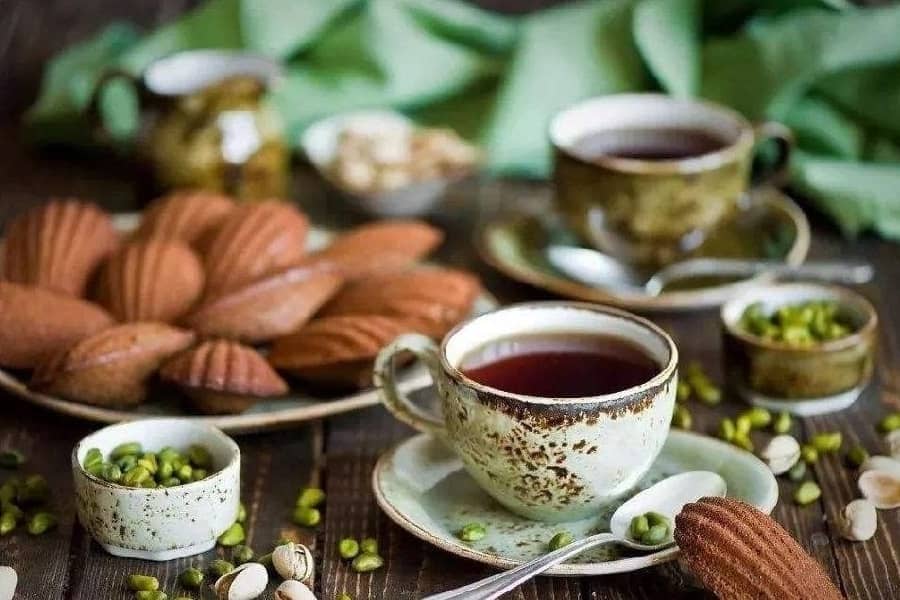Tea Culture in Russia: Exploring the Rich Traditions and Customs

Tea culture in Russia holds a special place in the hearts of its people. It is more than just a beverage; it is a symbol of hospitality, warmth, and connection. In this article, we will delve into the fascinating world of Russian tea culture, exploring its history, customs, varieties, and rituals.
History of Tea in Russia:
Tea was introduced to Russia in the 17th century through trade routes with China. Initially, it was a luxury commodity enjoyed by the elite. However, it quickly gained popularity among all social classes, eventually becoming the national drink. Today, tea remains an essential part of Russian culture, enjoyed by people from all walks of life.
Russian Tea Customs and Rituals:
Russian tea drinking is accompanied by unique customs and rituals. One of the most iconic elements is the samovar, a traditional urn used to heat and serve tea. The samovar serves as a centerpiece during tea gatherings, symbolizing both practicality and hospitality. Another important aspect is the preparation of zavarka, a concentrated tea solution that is mixed with hot water to create the desired strength.
Tea Drinking Etiquette:
The serving of tea in Russian culture is a ceremonial act. The hostess pours tea into each guest’s cup, creating a warm and welcoming atmosphere. Accompanying the tea are various treats and snacks such as pirozhki (savory pastries), blini (pancakes), and Russian honey cake. Engaging in conversations and toasts during tea sessions is also common, fostering a sense of unity and connection among participants.
Russian Tea Varieties and Flavors:
Russia has its own distinct tea blends. Black tea is widely consumed, with popular varieties including Krasnodar and Ivan Chai. Flavored teas like Russian Caravan and Prince Vladimir add a unique twist to the traditional black tea. In addition to black tea, herbal teas and tisanes play a significant role in Russian tea culture. The renowned Ivan Chai, made from fireweed, is a favorite among Russians.
Tea and Russian Cuisine:
Tea is a versatile beverage that complements various Russian dishes. It is commonly enjoyed with breakfast, lunch, and dinner. The combination of tea and vodka is also characteristic of Russian cuisine, with tea acting as a refreshing palate cleanser between shots of vodka. Paired with traditional delicacies like pirozhki and blini, tea enhances the overall dining experience.
Russian Tea Ceremonies and Traditions:
Tea ceremonies hold great cultural significance in Russia. They bring families together during gatherings and celebrations. In business settings, tea plays a vital role in negotiations and building relationships. Through tea, Russians express their warmth and hospitality, creating an inviting atmosphere for guests.
Modern Trends in Russian Tea Culture:
Russian tea culture continues to evolve and adapt to modern times. Tea houses and specialty tea shops have emerged across the country, offering a diverse range of teas from around the world. International trends have also influenced Russian tea culture, bringing new flavors and brewing techniques to the traditional tea scene. Despite these changes, the core values of Russian tea culture remain intact.
FAQ About Tea Culture in Russia
- What is the history of tea culture in Russia?
- Tea was introduced to Russia in the 17th century and quickly gained popularity among all social classes, eventually becoming the national drink.
- What is a samovar in Russian tea culture?
- A samovar is a traditional urn used to heat and serve tea that serves as a centerpiece during tea gatherings.
- How is tea prepared in Russian tea culture?
- Zavarka, a concentrated tea solution, is mixed with hot water to create the desired strength. The tea is then served from the samovar.
- What is the significance of tea in Russian social gatherings and ceremonies?
- Tea is a symbol of hospitality, warmth, and connection. It brings families together during gatherings and celebrations and plays a vital role in business settings.
- What are some popular Russian tea varieties and flavors?
- Black tea blends like Krasnodar and Ivan Chai, flavored teas like Russian Caravan and Prince Vladimir, and herbal teas/tisanes like Ivan Chai (fireweed tea) are all popular in Russian tea culture.
- What are some traditional treats and snacks to accompany tea in Russian culture?
- Pirozhki (savory pastries), blini (pancakes), and Russian honey cake are common to accompany tea in Russian culture.
- How is tea served in Russian tea culture?
- The hostess pours tea into each guest’s cup, creating a warm and welcoming atmosphere.
- What is the significance of the “zavarka” ritual in Russian tea culture?
- The preparation of zavarka is a significant aspect of Russian tea culture. It involves creating a concentrated tea solution that is mixed with hot water to create desired strength.
- What is the role of tea in Russian cuisine?
- Tea is a versatile beverage that complements various Russian dishes. It is commonly enjoyed with breakfast, lunch, and dinner.
- How has Russian tea culture evolved over time?
- Russian tea culture has evolved to adapt to modern times. Tea houses and specialty tea shops have emerged across the country, bringing new flavors and brewing techniques to traditional tea scenes.
Conclusion:
Tea culture in Russia is a vibrant and cherished part of Russian heritage. Its history, customs, and rituals reflect the country’s warmth, hospitality, and love for connection. Whether indulging in a cup of black tea, savoring herbal infusions, or participating in a traditional tea ceremony, Russian tea culture invites people to experience the rich tapestry of flavors and traditions that embody this cherished beverage. So, next time you enjoy a cup of tea, take a moment to appreciate the centuries-old traditions that have shaped the tea culture in Russia.

